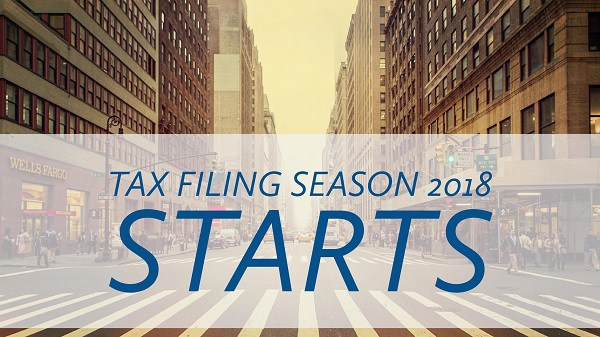
The IRS will begin accepting tax returns on January 29, with nearly 155 million individual tax returns expected to be filed in 2018.
Although the IRS will begin accepting both electronic and paper tax returns on January 29th, paper returns will begin processing later in mid-February as system updates continue. The IRS strongly encourages people to file their tax returns electronically for faster refunds.
The IRS set the Jan. 29 opening date to ensure the security and readiness of key tax processing systems in advance of the opening and to assess the potential impact of tax legislation on 2017 tax returns.
April 17 Filing Deadline
The nation’s tax deadline will be April 17 this year – so taxpayers will have two additional days to file beyond April 15.
The filing deadline to submit 2017 tax returns is Tuesday, April 17, 2018, rather than the traditional April 15 date. In 2018, April 15 falls on a Sunday, and this would usually move the filing deadline to the following Monday – April 16. However, Emancipation Day – a legal holiday in the District of Columbia – will be observed on that Monday, which pushes the nation’s filing deadline to Tuesday, April 17, 2017. Under the tax law, legal holidays in the District of Columbia affect the filing deadline across the nation.
Refunds in 2018
Choosing e-file and direct deposit for refunds remain the fastest and safest way to file an accurate income tax return and receive a refund. The IRS expects more than four out of five tax returns will be prepared electronically using tax software.
The IRS still anticipates issuing more than nine out of 10 refunds in less than 21 days, but there are some important factors to keep in mind for taxpayers.
After refunds leave the IRS, it takes additional time for them to be processed and for financial institutions to accept and deposit the refunds to bank accounts and products. The IRS reminds taxpayers many financial institutions do not process payments on weekends or holidays, which can affect when refunds reach taxpayers. The Where’s My Refund? tool on IRS.gov and the IRS2Go phone app will be updated with projected deposit dates for early EITC and ACTC refund filers in late February. Taxpayers will not see a refund date on Where’s My Refund? or through their software packages until then. The IRS, tax preparers and tax software will not have additional information on refund dates, so Where’s My Refund? remains the best way to check the status of a refund.
The IRS also reminds taxpayers that they should keep copies of their prior-year tax returns for at least three years. Taxpayers who are using a tax software product for the first time will need their adjusted gross income from their 2016 tax return to file electronically. Taxpayers who are using the same tax software they used last year will not need to enter prior-year information to electronically sign their 2017 tax return
